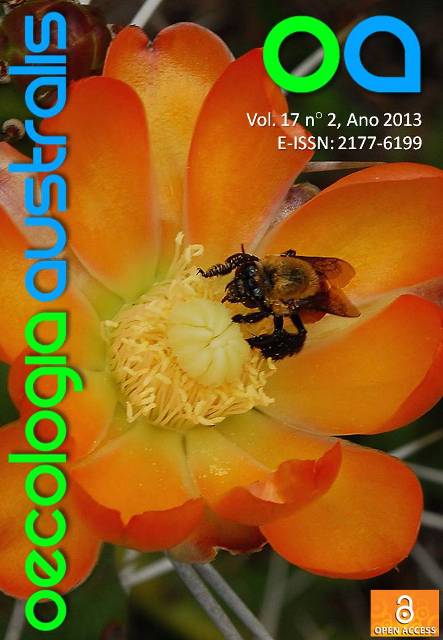THE ROLE OF COMPETITION IN STRUCTURING ANT COMMUNITIES: A REVIEW
Keywords:
coexistence, mosaics, null models, trade-offAbstract
Understanding the mechanisms that determine local patterns of diversity is among the primary goals ofecology. Among these mechanisms, competition is mentioned as the regulatory factor structuring biologicalcommunities, despite the fact that the concept is controversial in ecology. Myrmecologists, however, for the most part, view competition as one of the main factors structuring ant communities. Two hypotheses on themechanisms underlining species coexistence have received support from empirical studies. The first predicts a balance between competition and colonization, which form a continuum along which species are distributed. Species at one extreme are good at competing and bad at colonizing, whereas species on the opposite end are bad competitors and good colonizers. The interactions among various species over time are in a state of constant flux along this continuum. The second hypothesis predicts spatial clustering. According to it, ecologically dominant species have an aggregated spatial distribution, which would increase competition among individuals and the species' coexistence with subordinate species. Beyond these two, there are the trade-off and the mosaic theories, which involve competition and promote coexistence, and also the null models, which are used todetermine if competition is responsible for ant community structures. In the Myrmecology, the competition ispar excellence as one of the main factors structuring ant communities. Some hypotheses have been supportedin empirical studies of natural communities as mechanisms for species coexistence. The first is the balance competition/colonization, species were distributed along a continuum between good and bad contestants competing colonizing up bad and good colonizers, and their interactions over time would allow a state of constant flux along this continuum. The second hypothesis is the spatial clustering, in which ecologically dominant species have an aggregated spatial distribution, which would increase competition among individuals and species coexistence with subordinates. Besides these there are the trade-off theory and the mosaics, which involve competition and promote coexistence, and also the null models, which are used to determine if competition structures communities of ants. However, the objective is to demonstrate the main mechanisms that involve competition in structuring ant communitiesDownloads
Download data is not yet available.
Downloads
Additional Files
- Lista dos Possíveis Revisores (Português (Brasil))
- Carta de Submissão (Português (Brasil))
- THE ROLE OF COMPETITION IN STRUCTURING ANT COMMUNITIES: A REVIEW (Português (Brasil))
- Primeira Correção do Manuscrito: THE ROLE OF COMPETITION IN STRUCTURING ANT COMMUNITIES: A REVIEW (Português (Brasil))
- Carta ao editor com justificativas aos pareceres (Português (Brasil))
- Primeira THE ROLE OF COMPETITION IN STRUCTURING ANT COMMUNITIES: A REVIEW (Português (Brasil))
- THE ROLE OF COMPETITION IN STRUCTURING ANT COMMUNITIES: A REVIEW_English reviewer (Português (Brasil))
Published
2017-02-21
Issue
Section
Articles


